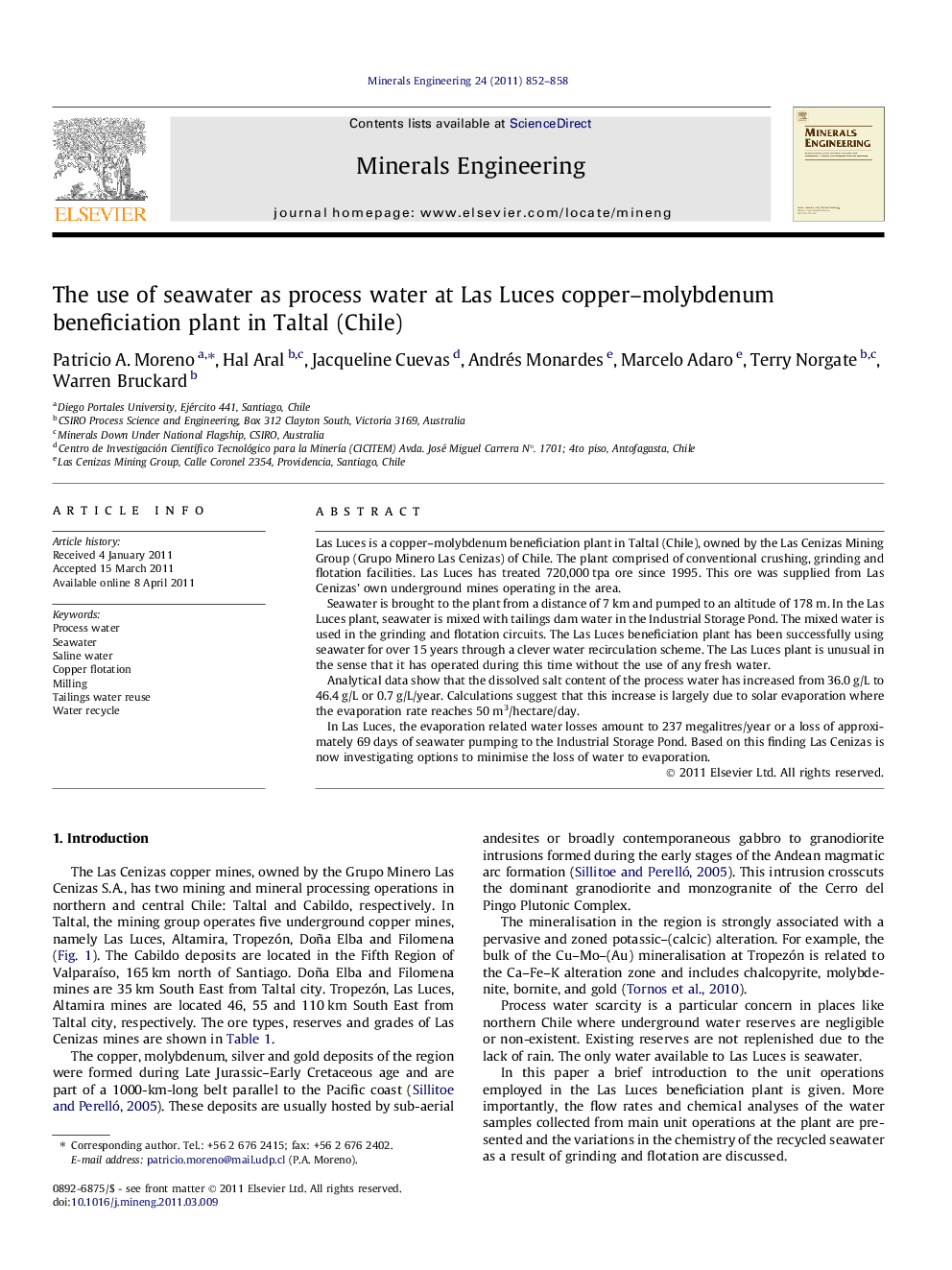| Article ID | Journal | Published Year | Pages | File Type |
|---|---|---|---|---|
| 233756 | Minerals Engineering | 2011 | 7 Pages |
Las Luces is a copper–molybdenum beneficiation plant in Taltal (Chile), owned by the Las Cenizas Mining Group (Grupo Minero Las Cenizas) of Chile. The plant comprised of conventional crushing, grinding and flotation facilities. Las Luces has treated 720,000 tpa ore since 1995. This ore was supplied from Las Cenizas’ own underground mines operating in the area.Seawater is brought to the plant from a distance of 7 km and pumped to an altitude of 178 m. In the Las Luces plant, seawater is mixed with tailings dam water in the Industrial Storage Pond. The mixed water is used in the grinding and flotation circuits. The Las Luces beneficiation plant has been successfully using seawater for over 15 years through a clever water recirculation scheme. The Las Luces plant is unusual in the sense that it has operated during this time without the use of any fresh water.Analytical data show that the dissolved salt content of the process water has increased from 36.0 g/L to 46.4 g/L or 0.7 g/L/year. Calculations suggest that this increase is largely due to solar evaporation where the evaporation rate reaches 50 m3/hectare/day.In Las Luces, the evaporation related water losses amount to 237 megalitres/year or a loss of approximately 69 days of seawater pumping to the Industrial Storage Pond. Based on this finding Las Cenizas is now investigating options to minimise the loss of water to evaporation.
Graphical abstractFigure optionsDownload full-size imageDownload as PowerPoint slideHighlights► Use of seawater as process water in a copper–molybdenum beneficiation plant. ► Metallurgical results are not affected by the seawater salinity. ► Small increase in total dissolved solids in process water in a period of 15 years. ► Seawater is a promising option for mineral processing.
